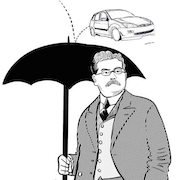|
I have a quick question. I rescued an old Agilent DSO1012A from the e-waste and it presents no power symptoms. I pulled it apart and the switching power supply is a discrete board. My plan was to start poking around to see what the state of that thing is, in a "baby's first crack at a PSU diagnosis" kind of way. What is the general guidance around energizing a power supply with no load? At this point I think I'm just trying to trace to see if there's anything super obviously faulty. I can do a few things before energizing it such as checking fuses (the obvious fuses check out fine), but at some point I guess the next step is to actually feed it 120 and see what is outputting what. Should I be connecting the actual scope in service of this? I really only ask because it's fairly compact and the wires are all short so it would be a bit awkward. But at the same time I'm not sure if there's a scenario where I try to diagnose the PSU and it's just obviously not working because it has no load or something. Not certain that I articulated that question right but hopefully it makes some sense. I'm trying to do everything I can before energizing simply because it's my first time actually working on a PSU so I'm being very cognizant of not zapping myself, or worse, without being overly paranoid. Healthy fear, is that the term?  At some point if it's not super obvious I'll see if I can make an effortpost and ask for advice on the actual repair.
|
|
|
|

|
| # ? May 21, 2024 17:30 |
|
If the scope's power is controlled by a physical chonky switch then you don't need to connect the rest of the scope to diagnose the issue (and imo shouldn't have it connected at least at first to avoid damaging anything delicate if you short something to something else). The power supply probably won't be unreasonably weird without a load. Standard "working on live mains power" rules apply: keep one hand in your pocket at all times when the thing is energized, if you're using any equipment that's grounded (like a different scope, or really anything that's not a battery-powered meter) power it with an isolation transformer, physically unplug the thing and confirm the capacitors are discharged before you start touching it, just generally don't be an idiot, etc. e: Also when I'm working on something in a way that doesn't need an isolation transformer, I usually plug the thing in through a little GFCI plug like this one just in case I somehow get a current path going through my hand to something grounded. If you are using an isolation transformer however a GFCI is useless, so keep that in mind. Shame Boy fucked around with this message at 16:25 on Dec 15, 2023 |
|
|
|
My advice is that if you don't touch any energized contacts you are not likely to be shocked. It's so much easier to debug that stuff with live power - measure the outputs (presumably bad) and move backwards until something looks like it should. Switching PSUs should output fine with no load, but if the failure is in the regulation it can look OK unloaded and fail loaded. If something is burned out you might get lucky and find some scorches or burst or leaky caps before you begin. Also if it smells or smokes when you put power on and you can find the hot spot that can be useful.
|
|
|
|
I've also been shocked many many times by many power forms so maybe ignore my advice. The least pleasant? 28VDC aircraft power. The best? 209 split phase. Truly the gentlemans choice for being blasted.
|
|
|
|
I've always wondered what it'd be like to get shocked from one of the old european railway power systems, like at 16.7 Hz or 25 Hz. But I'm not sure if they have stepped-down 16.7 Hz in the cabin. Getting the full 30 kV from the pantograph would undoubtedly overwhelm any appreciation of the low-frequency terroir.
|
|
|
|
If they do step down the 25Hz, those transformers must be massive.
|
|
|
|
I'm pretty sure some TENS units go down to those kinds of frequencies if you want a safe way to experience the fine delicacy of unusual shocks
|
|
|
|
Stack Machine posted:If they do step down the 25Hz, those transformers must be massive. From what I remember, they use rotary converters AKA motor-generator sets. Giganticon posted:I've also been shocked many many times by many power forms so maybe ignore my advice. The least pleasant? 28VDC aircraft power. The best? 209 split phase. Truly the gentlemans choice for being blasted. 28VDC off the bus is definitely a thing, but getting all three phases of 115VAC 400Hz feels like molten ants running around on your skin. And, of course, not having the mag grounded when the impulse coupler kicks. We almost had a guy knock himself off the tail because he was checking output voltage of the anticollision light power supply AT THE LAMP. It's a 80kV 600W xenon flash lamp. That power supply will straight kill you, and then the fall off the top of the ladder just adds injury to death. edit: thought this was the aviation thread where the guy was asking about being an airplane mechanic. babyeatingpsychopath fucked around with this message at 23:41 on Dec 15, 2023 |
|
|
|
I only shocked myself once with 240V, but I agree it was the best as it made me make a cartoonish "ababababababa" noise and left a little scorch mark. 110V just felt like a strange little massage, thankfully I was not grounded. Unrelated question; I've heard tales of digital servos that are actually digital, e.g. you talk to them over a serial protocol instead of just PWMing at them. This gives them the ability to turn off the drive (so they're no longer "active") and read their position back (which might be useful while they're not "active"), for example. Is this true? What am I meant to be googling to find this because just "digital servo" finds the usual sort that takes PWM but just (allegedly) contains a microcontroller.
|
|
|
|
When I was making my little CRT scope clock kit I got shocked by the CRT when I was adjusting it. It wasn't super bad. I was rotating the tube and I think my finger on the side of the tube allowed for a path to ground somewhere and got a pretty nasty tingle.
|
|
|
|
Charles Ford posted:I only shocked myself once with 240V, but I agree it was the best as it made me make a cartoonish "ababababababa" noise and left a little scorch mark. 110V just felt like a strange little massage, thankfully I was not grounded. You might be thinking of actual industrial servomotors that have position encoders built in. They're driven by servomotor drives and you just talk to them over ethernet/IP as part of your PLC's motion control system. I've got a machine that uses Yaskawa drives. The servomotor is 1.5kW; here's a comparable one on ebay. 20-bit encoders, connects to the drive with two shielded cables (power and data are separate), and the PLC just sends commands to the drive to tell the motor to move to a position at a rate and it happens, with feedback in case it doesn't. Those ebay prices look like about 50% of dealer bulk pricing.
|
|
|
|
For a project recently instead of a servo with an encoder we used a "smart DC motor" which is just a motor with built in controller with crude modbus and crude programmable IO controls. It's not very strong and not very accurate with it's positioning but we didn't need it to be, and it was real cheap vs a proper servo in dollars and very quick to make work vs setting up a dart controller or other controls and doing it myself. It had to be externally powered with a low output capacitance DC power supply, but it turns out resonance power supplies for a given watt output are much cheaper than switching. https://us.nanotec.com/products/2878-bldc-motors-with-controller-integrated-brushless-dc-motors I was skeptical at first but it did exactly what we needed it to, I recommend it as a discount option.
|
|
|
|
Charles Ford posted:Unrelated question; I've heard tales of digital servos that are actually digital, e.g. you talk to them over a serial protocol instead of just PWMing at them. This gives them the ability to turn off the drive (so they're no longer "active") and read their position back (which might be useful while they're not "active"), for example. Is this true? What am I meant to be googling to find this because just "digital servo" finds the usual sort that takes PWM but just (allegedly) contains a microcontroller. I've seen them servos on the internet. They were from a German company, not unlike https://www.volz-servos.com/actuators/standard-actuators/. Prices are probably mil-grade.
|
|
|
|
Charles Ford posted:I only shocked myself once with 240V, but I agree it was the best as it made me make a cartoonish "ababababababa" noise and left a little scorch mark. 110V just felt like a strange little massage, thankfully I was not grounded. You're only a pro once you can tell the difference between AC and DC.
|
|
|
|
DC was the one who wore the school uniform on stage right? I forget which one AC was.
|
|
|
|
babyeatingpsychopath posted:edit: thought this was the aviation thread where the guy was asking about being an airplane mechanic. It's fine, stories of people getting whammied are always fun no matter where you post em' 
|
|
|
|
Giganticon posted:For a project recently instead of a servo with an encoder we used a "smart DC motor" which is just a motor with built in controller with crude modbus and crude programmable IO controls. It's not very strong and not very accurate with it's positioning but we didn't need it to be, and it was real cheap vs a proper servo in dollars and very quick to make work vs setting up a dart controller or other controls and doing it myself. It had to be externally powered with a low output capacitance DC power supply, but it turns out resonance power supplies for a given watt output are much cheaper than switching. I got all excited when I saw they came in stepper motor sizes cuz I definitely have a project that needs positional control but not a stepper motor, but then noticed even the small ones are like $500 so whelp guess not 
|
|
|
|
Not directly related to servos, but I've been following this guy's project for arduino based ethernet connected stepper motor drivers: https://www.youtube.com/watch?v=80j7L1H61Hw I think the idea is if you have a robot or machine that could use multiple steppers, you could run ethernet in it to do all of the stepper controls if you wanted. I was thinking about using some extra steppers I have to turn them into project motors like a network connected opener for the curtains or something. His video after this one features a super tiny 100Mbit switch which isn't his design but a product to buy, but it's a potentially neat option if one was going to make a machine using his Ethersweep controllers.
|
|
|
|
https://www.robotshop.com/collections/smart-servo-motors
|
|
|
|
csammis posted:What the gently caress, I work for Garmin in core engineering and I had no idea we sold components like this One of them was used on the mars helicopter as a lidar altimeter!
|
|
|
|
babyeatingpsychopath posted:From what I remember, they use rotary converters AKA motor-generator sets. Giant transformers on the locomotives themselves to feed power to the traction motors. Smaller big motor generators to power stuff like lights, aux equipment and battery chargers on the train. If you look up videos of old 1910s-1930s german or swiss locomotives, you can hear the deep 16,7hz rumble if you have good speakers or good headphones. It's a weird, uncanny sound if you're used to standard 50hz hum being everywhere.
|
|
|
|
For some reason, I feel the need to point out that a "servo" system is anything that has a positioning element with feedback to hold that position. This positioning element can be a rotary or linear motion device, and can be controlled by electrics, hydraulics, pneumatics, or something mechanical. The control system can likewise be electric, hydraulic, pneumatic, or mechanical. The control system does not necessarily have to expose the feedback and positioning system, but sometimes it does. Some common "servo" examples are power steering in a car. These can be hydraulic control and actuation, electric control and actuation, electric control and hydraulic actuation, or (infrequently) something else. For common electric/electric servo systems, the motor itself can be anything. DC, AC, stepper, brushless.... As long as the control system can tell it to turn the correct direction and stop when it needs to, the motor can be the actuation side of a servo system. The important bit is that there's feedback from the actual position the motor is at so that the control system can compare that to the desired position and generate a signal to move the motor to the desired position. This happens CONSTANTLY; the control system is ALWAYS comparing the actual and desired position and generating signals if required. This is what makes servos particularly useful for positioning: If you tell your control system to set the angle to 0, then the control system KEEPS the angle at 0, even if something is moving the shaft around.
|
|
|
|
Unfortunately the term "servo motor" is a thing, and I see motor vendors use it to describe motors rather than the sensors/drivers controlling it.
|
|
|
|
|
LimaBiker posted:They use giant motor-generators to generate the power these days. Back in the day they had their own complete power stations and independent grid. This is awesome and I guess it makes sense they don't use transformers for the lighting. I bet that would be a mess of flicker.
|
|
|
|
It also saves on very expensive 15kV suitable circuit breakers and such, if you only have 1 big honking transformer whose power you gotta interrupt. Circuit protection and switching is much easier at 1500 or 700v or whatever voltage those things used - i have no clue.
|
|
|
|
Thanks for the links all! Some of them are definitely a bit rich for my blood. And yes, I was aware "servo" was a fairly generic term. I knew I'd seen what I wanted somewhere though. I do have some robot arms where the chunky motors are steppers with encoders mounted on them, but I did want an "all in one" solution that just works for what I'm planning. It also bothers me slightly that the little standard servo motors you can buy have an encoder inside but don't expose it, since that'd just be convenient  I even wondered if I could reprogram the MCU in one to do serial but I suspect some of the ones I have from e.g. aliexpress probably aren't even digital despite the sticker saying that, and even if it were and not an ASIC, it's probably real ROM. I even wondered if I could reprogram the MCU in one to do serial but I suspect some of the ones I have from e.g. aliexpress probably aren't even digital despite the sticker saying that, and even if it were and not an ASIC, it's probably real ROM. Thanks ante, this link definitely satisfies my "not very expensive, but does everything i asked for" requirements. My plan is to try and automate some shutter blinds we have in our living room. I've seen a few people basically just strap servos straight onto them online (with a little 3D printed guide to allow them to slide up/down) but they're always powered so you lose the ability to actually operate the shutter yourself, or power down the servo when it's not in use but you still don't know if it's open/shut. I plan to hook them up to an ESP32 and have it MQTT the readings constantly, and accept "move to this position" commands for all four. These ones are cheap enough that I might buy a few extra just for playing around with, though!
|
|
|
|
I've torn down some of the really cheap ones, and they are PICs. So, yeah, almost definitely reprogrammable. Weird that I've never seen it done, now that I think about it
ante fucked around with this message at 04:37 on Dec 17, 2023 |
|
|
|
Man, wish I would have known about some of those servo motors when doing my senior design project. Though I doubt we could have used them within the constraints of a capstone project.
|
|
|
|
I keep wanting to have a project that legit lets me use synchros on something. Synchros are these neat 3-phase systems that can do addition, subtraction, and Other Stuff. Resolvers are like synchros but compute sin/cos directly and use those phase angles to do Other Things (like differentiation somehow and complex coordinate translation in three dimensions).
|
|
|
|
Magnetic machines in general are cool as hell. Have 2 3-phase power grids that aren't synced but want to transfer power between them? Why not build a transformer with a secondary on a rotor? That's called a VFT. Drive the rotor with DC instead and you have a synchronous motor. Short that rotor and it's an induction motor. Want to soft start that induction motor? Just put some resistors in series with that rotor while it spins up. Drive the stator with DC and use the rotor as a 3-phase generator, adjust the stator current to regulate the output voltage. So many possibilities! As a bonus drive 1 stator coil with AC and it works as a synchro too.
|
|
|
|
What kind of symbol is this? First I thought a transformer, but it looks like an inductor? And L is also the symbol for an inductor. L1 I guess. Never seen something like this before however. It's for a radio on the FM reception circuit. Still digging through the service manual. The radio has four bands LW,MW,SW and FM. The FM band doesn't work at all, just static and turning the dial doesn't even alter the sound. So I'm trying to figure out how the thing works, this seems to sit between the antenna and pre-amplifier for the FM circuit.  e: Pretty sure it's a bandpass filter now. His Divine Shadow fucked around with this message at 08:45 on Dec 21, 2023 |
|
|
|
Well a transformer is an inductor. I'm guessing the capacitors are to dump high frequencies to ground and everything else goes through the transformer to change to a voltage the radio can use.
Cojawfee fucked around with this message at 08:53 on Dec 21, 2023 |
|
|
|
It is a bandpass filter. It consists of 2 tuned LC circuits, that are inductively coupled to each other. The impedance of it is very high for the frequency it's tuned to. Anything above and below it gets shorted to ground. The capacitor takes care of the high frequencies, the inductor of the low frequencies, together they resonate and form a sort of bell curve. It is very rare to find it in this configuration at the input (RF) side of a receiver, because generally the bandwidth of such a device is very narrow, so you would only be able to receive one single station. Instead, you find it at the IF (intermediate frequency) stages. Bandpass filters at the input stage do exist, but they always are tuned together with the oscillator circuit, to tune into the desired station.
|
|
|
|
Am I misreading this perhaps? Page 12. https://ia904503.us.archive.org/0/items/manual_QT27_SM_SHARP/QT27_SM_SHARP_text.pdf
|
|
|
|
That's at the input all right. You can make the passband wider by adding some resistance to the system, so they probably chose the wire for the inductors to make the FM broadcast band fit into the passband.
|
|
|
|
His Divine Shadow posted:What kind of symbol is this? First I thought a transformer, but it looks like an inductor? And L is also the symbol for an inductor. L1 I guess. Never seen something like this before however. I don't know if you watch Mr. Carlson's Lab at all, but whenever he talks about adjusting "slugs" he's adjusting one of those. Some types have adjustable ferrite slugs in them that let you tweak what frequency they're tuned at with a screwdriver.
|
|
|
|
Huygens Optics visited a company that makes chip photolithography machines, seems like something y'all would like: https://www.youtube.com/watch?v=rdlZ8KYVtPU One machine costs over €170 MILLION 
|
|
|
|
Highly unusual and quite the hack to use one of those, non-tuned, as an input stage to any receiver. I knew vaguely similar things were used in german post-war emergency receivers, because a dual gang tuning capacitor was hard to get and/or expensive back then. Strictly spoken the one in the circuit does not have tunable slugs. There is no 'trimmer' symbol in the coils. I checked out the datasheet of the FM receiver IC and it uses the PFJB2 bandpass filter. Can't find much info about that.
|
|
|
|
LimaBiker posted:Highly unusual and quite the hack to use one of those, non-tuned, as an input stage to any receiver. I knew vaguely similar things were used in german post-war emergency receivers, because a dual gang tuning capacitor was hard to get and/or expensive back then. Yeah to be clear I wasn't saying that one had slugs or was adjustable, just that the context I've always encountered them in was as trimmers, and they come up a lot on Mr. Carlson's Lab as such so maybe they're more familiar to some people in that context.
|
|
|
|

|
| # ? May 21, 2024 17:30 |
|
LimaBiker posted:Highly unusual and quite the hack to use one of those, non-tuned, as an input stage to any receiver. I knew vaguely similar things were used in german post-war emergency receivers, because a dual gang tuning capacitor was hard to get and/or expensive back then. It may be weird but it seems to be what that part's sold for. Here's a datssheet app for a toshiba FM front-end IC:  That filter goes between the antenna and a common base amplifier inside of that front-end IC, before the tuner. Edit: that's the same front-end used in His Divine Shadow's receiver, so I guess they just copied the app circuit from the datasheet. Stack Machine fucked around with this message at 18:18 on Dec 21, 2023 |
|
|























